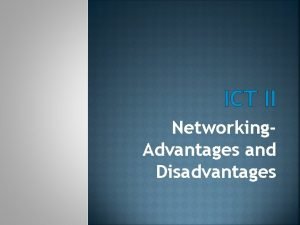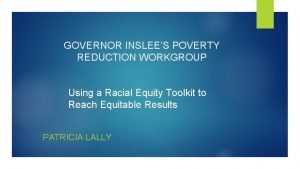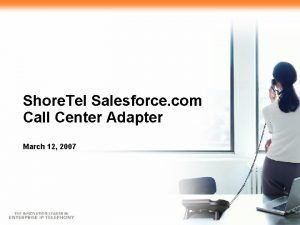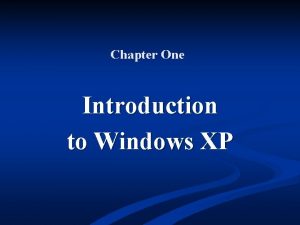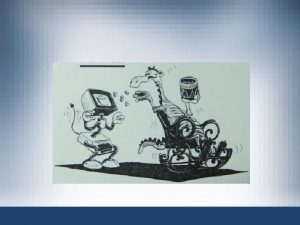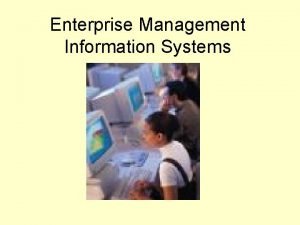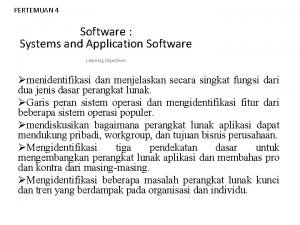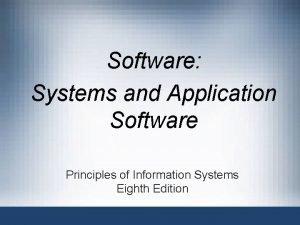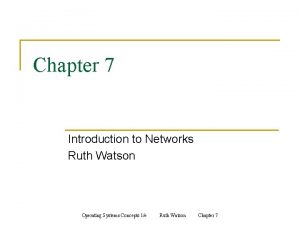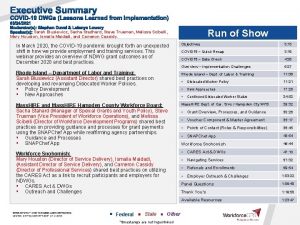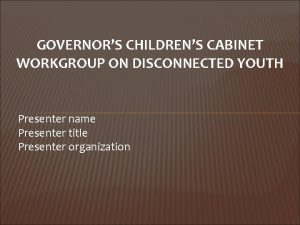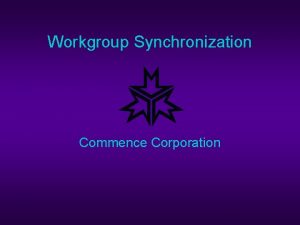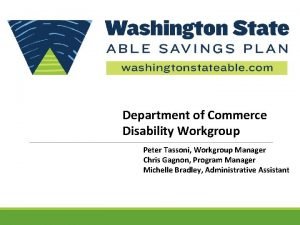YOUTH WORKGROUP PRESENTER Sacha Stadhard 1 MissionPurpose of










- Slides: 10

YOUTH WORKGROUP PRESENTER: Sacha Stadhard 1

Mission/Purpose of Workgroup Mission Statement • To provide a framework for establishing an integrated service delivery system that supports positive outcomes for disconnected youth. Purpose • To identify state level policy changes to create effective outcomes for youth. Focus Areas • • Increase services to out-of-school youth (OSY) and older youth Increase services to youth with disabilities Career Pathway Development Expand access to work experiences for in-school and out-of-school youth through: – – On – The – Job Training Pre-Apprenticeship / Apprenticeship Individual Training Accounts Internships / Job Shadowing 2

Methodology • The group engaged WIOA Core Partner Programs, Workforce Partners, Workforce Boards, and Youth Service Providers • We held monthly meeting to discuss the key changes in the WIOA Youth Program and to develop strategies for alignment of services and resources for youth. • We reviewed new WIOA Youth Eligibility requirements. • The group discussed WIOA CORE partner requirements. 3

Key Issues • Program models for serving out-of-school youth (OSY) and older youth • State level coordination of youth services and resources • Referrals between Core Partner Programs • Cross trainings for agency staff 4

Policy Recommendations • Issue a Policy focused on a New referral process between Title I Youth Program and Title II Adult Basic Education Program – Policy will outline a referral process for youth 16 -24 to: • ABE programs for literacy skills and the attainment of secondary credentials and; • to WIOA youth service providers who can provide occupational skills training and work experiences and; • include description of appropriate roles for OSCC staff and ABE staff to support career pathways for youth. – As well as a process for co-enrollment between Title I and Title II to support the integrated educational and training needs of youth through career pathways. • Issue a Policy focused on a New referral process between Title I Youth Program and Title IV Vocational Rehabilitation – Policy will outline a referral process for youth 14 -24 to: • Vocational Rehabilitation to receive support services and accommodations needed to participate in youth program services and; • from Vocational Rehabilitation to youth service providers to provide pre-employment transitions services as required under WIOA which include: job exploration counseling, work readiness training, and work-based experiences; and • include a description of appropriate roles for OSCC staff and Vocational Rehabilitation staff to support career pathways for youth with disabilities. 5

6

7

Operational Changes • Key operational changes include: – Information Sharing – Cross Trainings for agency staff – Standard Referral Forms – Increase staff knowledge base for referrals to available services • Two subgroups developed to address operational issues: Youth with Disabilities subgroup • Develop a common referral form • Identify Best Practices • Map out a Service Delivery Strategy for Youth with Disabilities • Identify Service Provider and Technical Assistance and Support Needs Out-of-School Youth subgroup • Outreach / Recruitment Strategies • Identify Best Practices • Leverage Existing Resources • Identify Service Provider and Technical Assistance and Support Needs • Identify of new programs models for OSY and older youth 8

Performance Standards • Increase services to out-of-school youth • Increase services to youth with disabilities • Increase access to work experiences • Co-enrollment with WIOA Core Programs and workforce partners • Measure of referrals between WIOA Core Program and workforce partners • Longitudinal measure of outcomes for WIOA youth who participate in career pathways 9

Expected Product for State Plan Ø Youth Procurement Policy 100 DCS 19. 100 • Describes State – developed criteria used by local boards in awarding grants for youth workforce investment activities… Ø Youth Requires Additional Assistance Policy (Revised for WIOA) • Contains language for the State policy of Requires Additional Assistance Policy to complete an educational program, or to secure or hold employment. Ø Career Pathway Vision Statement • Concurrently increasing knowledge, skills, workforce preparation and academic skills, competencies, credentials, and assisting youth in making educated career choices informed by and aligned with industry/ employers skill needs. Ø Adoption of the WIOA Youth Career Pathway Model Ø Adoption of the Massachusetts Career Pathway Blueprint Ø Policy recommendations for referrals to Title II (ABE) and Title IV (Vocational Rehabilitation) 10
 Advantages of workgroup computing
Advantages of workgroup computing Workgroup sphere of influence
Workgroup sphere of influence Poverty reduction workgroup
Poverty reduction workgroup Shoretel salesforce
Shoretel salesforce Workgroup vs domain pros and cons
Workgroup vs domain pros and cons Workgroup sphere of influence
Workgroup sphere of influence Enterprise mis
Enterprise mis Off the shelf application software examples
Off the shelf application software examples Application software explanation
Application software explanation Diff between workgroup and domain
Diff between workgroup and domain Workgroup cluster
Workgroup cluster
